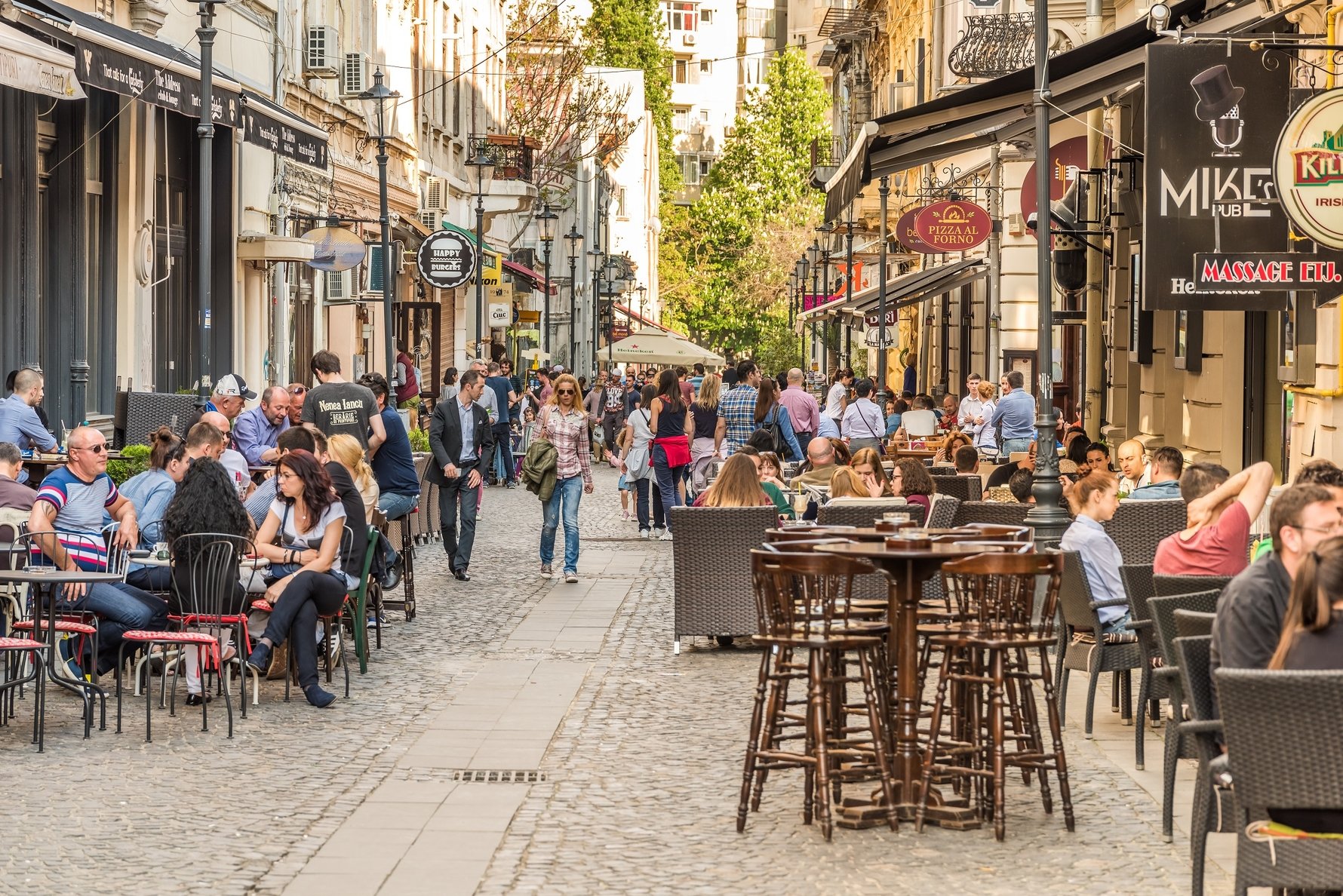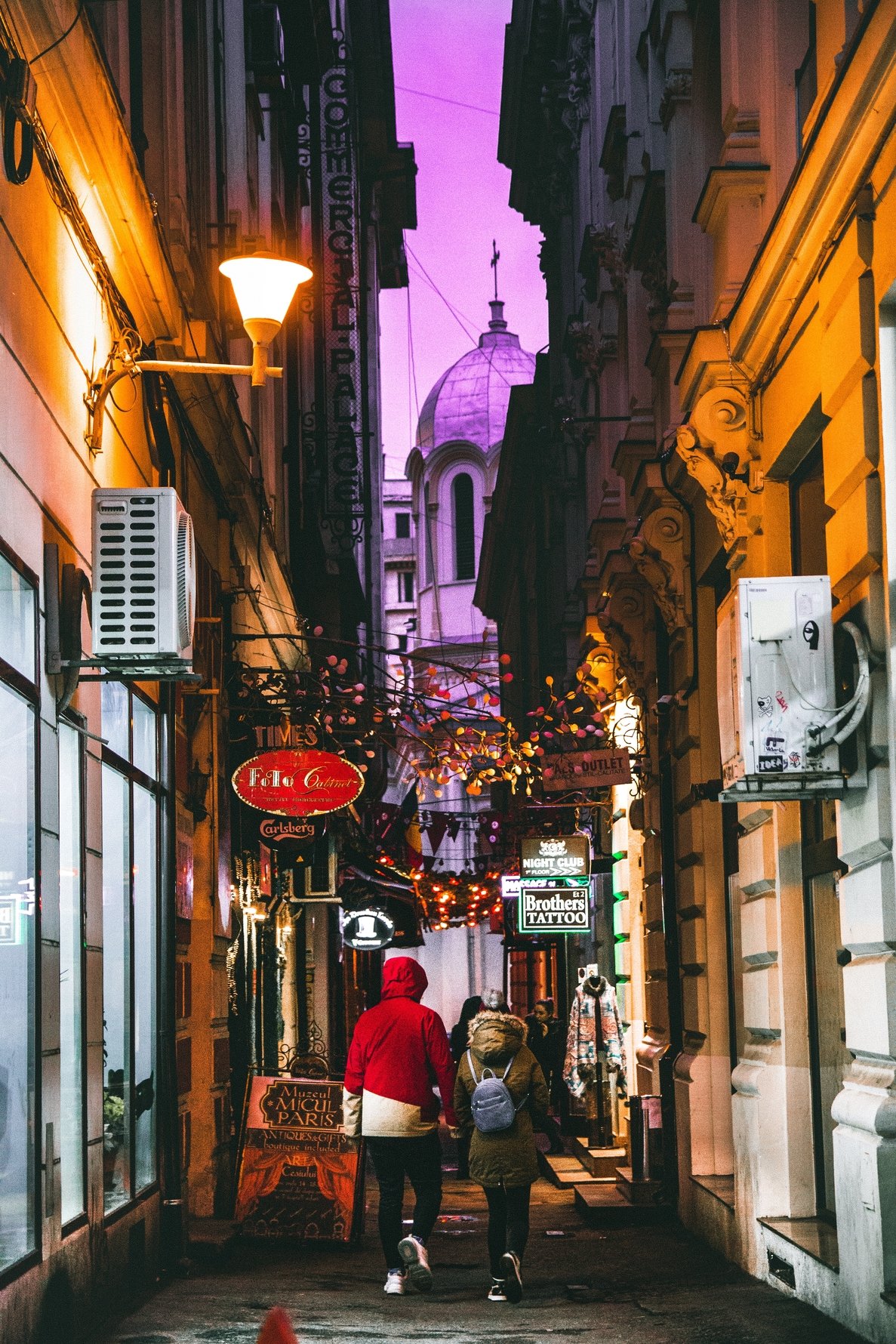While much of Bucharest changed beyond recognition after 1989, nothing compared to the transformation of Old Town/Lipscani during the boom years of the late naughties, which saw what was very much a no-go area with almost nothing to offer visitors into one of the Romanian capital’s liveliest entertainment districts. Much of that development, however, was ad hoc, as is so often alas the Bucharest way: posh restaurants and trendy clubs opened in buildings which looked as though they may fall down at any moment.
All of that changed however in the wake of the fire at Colectiv in October 2015, and a number of venues which were housed in buildings considered an earthquake risk (those with a red disc on them) have been quite properly forced to close by new legislation.
As such, the future of Old Town is a little unsure. What you can be sure of is that those venues which remain open in the Old Town (less a Red Light and more a Red Disc district these days) are as safe and secure as Bucharest gets.

Old Town / Lipscani: A Brief History
The Bucharest Old Town area is historic for this is where Bucharest was founded. Kind of. According to legend, Bucur the Shepherd founded the city in the 1300s when he built a church somewhere on the eastern bank of the Dâmboviţa river: nobody is sure exactly where this church was (or even if it actually existed). What we do know is that by the first reign of Vlad Ţepeş (1459-1462) there was a palace and court (the Palatul Curtea Veche) in the area we today call Old Town, and that the city grew quickly around the palace.By the middle of the 17th century the area was Bucharest merchant district, which it to all intents and purposes remained until the end of World War II, when many of the rightful owners of the houses and businesses which lined the area’s streets were arrested by the communist authorities, and their property confiscated and left to rot. The entire area - viewed as being far too bourgeous for communist tastes - was then neglected for decades, with many of the empty buildings being occupied over the years (legally or otherwise) by Gypsies. Many of these Gypsies remain today, and add real colour to the area.


